War Museum
|
Located in the area where the first Army Cadet School were, the War Museum was inaugurated at the end of 1988. (Amalias,22). The Museum is a directive of the history of the Army Cadet School and that of contemporary history of the Greek state, the participation of the citizens of Argolida prefecture in all rebellious acts, from the Greek Revolution against the Ottoman Empire to the liberation from the occupation troops. Divided into two floors, the Museum follows a thematic presentation of the Greek state fightings and struggles. |
||
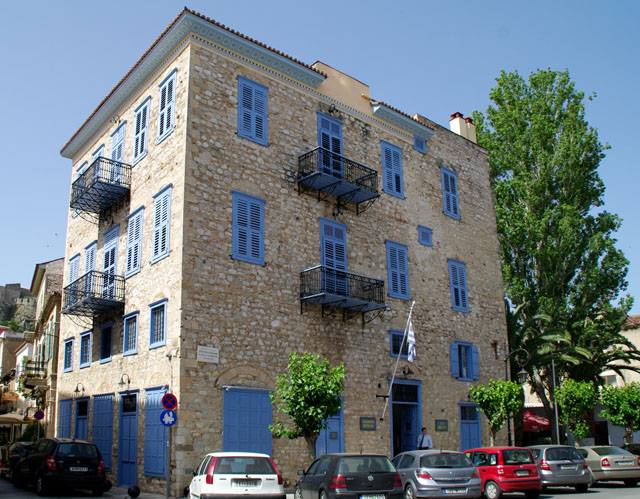 |
||
| In particular: 1st FLOOR: A) Dedication to the First Governor of the free Greek State, Ioannis KapodistriasB) The city of Nafplion. The active involvement and participation of the city into the fires of the Greek Revolution, the soul of a rebellious wave, are all presented through very rare engravings, glorifying the city and its fortress walls. C) The first School of Army Cadets was established under the name of "Central War School" by Ioannis Kapodistrias, an act to man the Infantry and Navy of the time. The school was operational from 1828 to 1834. Works of art, uniforms, weaponry and pictures fill up the mosaic of the time. D) 1821-1897 Period: The fires of revolution have started sparking from Peloponnese in March 1821. The city of Argos, under Tsokris commander, the village of Koutsopodi with the "Nezaious", the area of Kranidi with commander Papasernis alongside many citizens of Argolida, all in the front line of the battle for liberation. Palamidi castle and Anapli become freed from Staikopoulos and Kolokotronis, heroes of the Greek Revolution. "Dervenakia" region and "Miloi" region turn into major battle fields, decisive and glorious victories won there against the Turks and Ibrahim's Egyptian troops. The governor Ioannis Kapodistrias establishes the very first independent Greek State. His assassination sharply and unfairly interrupts his work in September 1831. Two years later, Nafplio welcomes the enthronement of King Othonas and in 1834 the citizens of Nafplio get confronted with Theodoros Kolokotronis' sentence to death. On December 1, 1834, the capital city of the Greek State changes from Nafplio to Athens. The prelude to Othonas' dethronement is written with Nafplio rebellion (1/2/1862), sparked by Kalliopi Papalexopoulou, as the chief insurgent. Works of art, engravings, stone work, armory and generally, archive material do justice to the heroic way for freedom by the Greeks. E) Macedonian War (1904-1908). A unique mosaic of the tribute paid to the honorable and gallant endeavors of the Greeks in Macedonia, to hold tight to, to retain their homelands, their religion and their history is depicted here. Argolida prefecture actively involves itself to the fires of combat, commanded by Sarantos Agapinos (Captain Agras), by K.Tsokalopoulos (Captain Rebelos) and more. The culmination of the War in Macedonia comes with the engagement of Pavlos Melas, whose heroic death summons all Greeks to the war, making the Macedonian War now, a Pan-Hellenic one. Again, works of art, stone work, retro photographs, armory and war spoils compose the notes played, revive all those instances and heroic acts of a newly-born free state to survive, flourish and run to the aid of its 'brothers and sisters' in Thessaly, Macedonia, Epirus, Thrace, Crete.
|
||
 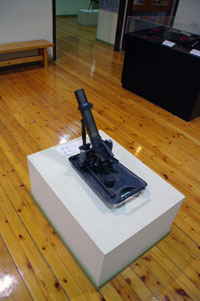 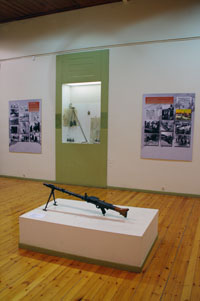 |
||
|
2nd FLOOR: A) The Asia Minor Crusade (1919-1922). The imperialistic commands of the Great Powers of the time as well as the accomplishment of the irredentist Big Idea led the troops of the Greek Army to the shores of Asia Minor. Victories and triumphs will be overshadowed by annihilation and white-washing of Hellenism. The frantic waves of refugees found shelter in the cities of Argos, Nafplio and eventually founded Nea Kios. Gallantry, honor, fear, devastation are all exhibited here. (under construction)
|
||
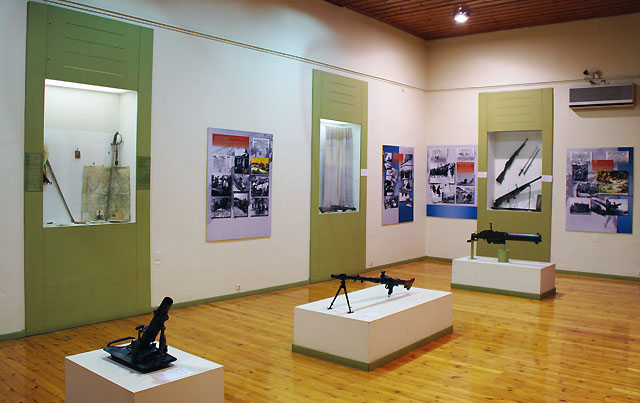 |
||
|
E) Occupation-Resistance: The occupation of the Greek state is now completed. The 1941-1942 winter season with all its hardships and sufferings bring the citizens to their knees. Nonetheless, what is sprung out of it is the period of Resistance, since valor, strength and hope is never lost. The Greeks massively oppose all executions and defeat the occupants. Relics of the time, photographic material and pieces of armory glorify and immortalize the heroic deeds of the Greeks. F) After the country's occupation, the Greek government finds refuge in Egypt. Middle East is now the focus of attention, where Greek military groups (the Hellenic military Navy and Aviation) fight side by side with the Allies in the battles of El Alamayne (1942), the military operations of North Africa (1942-1943), Italy (1944) and in the liberation of the Aegean islands (1944-1945). G) Liberation. The military success that the Allies seem to relish, Hitler's "Waterloo" ( utter ruination) on the east, the landing and triumph in Normandy and the Pacific dawn a new beginning and explain the end of the Axis powers. On October 12, 1944 the capital is made free. The people of Greece, after a nightmarish night with the occupants, welcome freedom in tears of joy and enthusiasm. Photographs, relics, plumage, all indicative of the dramatization of the times. H) The Army Cadet School. Photographic material, medals of Honor, military costumes and more discuss and synthesize the works and status of the Military Academy, which was the breeding ground for many of Greece's celebrated personalities. |
||
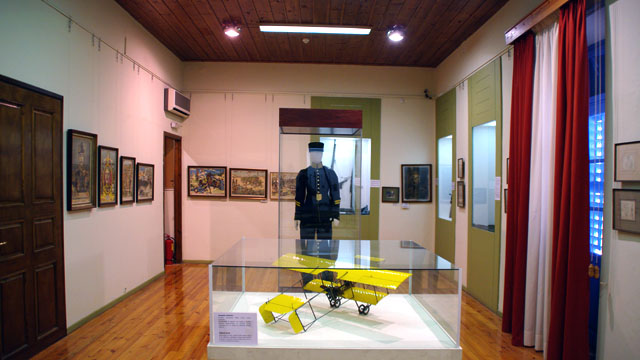 |
||
|
|
||
| Museum's address: Amalias 22, P.C 21100, Nafplio city. (Lat: 37.56609609859713, Long: 22.798739075631488) The exact location of the Museum can be tracked in the section: Map Contact Number: 27520 25591 Visiting Hours: Tuesday-Sunday and National Celebrations: 09.00-14.00 Free entrance is allowed to school and university students, instructors, tour guides, public servants of the Ministries of Culture and Defense, senior citizens. |



